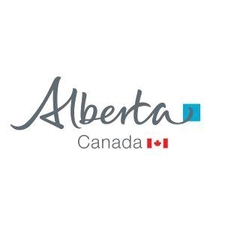84A
Type of resources
Topics
Keywords
Contact for the resource
Provided by
Formats
Representation types
Update frequencies
status
-

This GIS data set is a compilation of known kimberlite pipe locations for Alberta. The positions are generally known to +/- 500 m or better on the ground.
-

The Geological Atlas of the Western Canada Sedimentary Basin was designed primarily as a reference volume documenting the subsurface geology of the Western Canada Sedimentary Basin. This GIS dataset is one of a collection of shapefiles representing part of Chapter 19 of the Atlas, Cretaceous Mannville Group of the Western Canada Sedimentary Basin, Figure 4, Mannville Isopach. Shapefiles were produced from archived digital files created by the Alberta Geological Survey in the mid-1990s, and edited in 2005-06 to correct, attribute and consolidate the data into single files by feature type and by figure.
-

This GIS dataset depicts the surficial geology of the Grand Rapids area (NTS 84A/SE) (discontinuous permafrost features). The data were created in geodatabase format and output for public distribution in shapefile format. These data comprise the permafrost polygon features of Alberta Geological Survey Map 566, Surficial Geology of the Grand Rapids Area (NTS 84A/SE).
-

This GIS dataset depicts the surficial geology of the Thickwood Hills Area (NTS 84A/NE) (GIS data, point features). The data were created in geodatabase format and output for public distribution in shapefile format. These data comprise the point features of Alberta Geological Survey Map 555, Surficial Geology of the Thickwood Hills Area (NTS 84A/NE).
-

This GIS dataset depicts the surficial geology of the Thickwood Hills Area (NTS 84A/NE) (GIS data, line features). The data were created in geodatabase format and output for public distribution in shapefile format. These data comprise the line features of Alberta Geological Survey Map 555, Surficial Geology of the Thickwood Hills Area (NTS 84A/NE).
-

The dataset was developed as part of the Western Economic Partnership Agreement (WEPA) project covering all of NTS 73M, southern three-quarters of 74D and southeast part of 84A. It contains all the linear landform features such as eskers, flutings and melt-water channels, etc. Part of the dataset was complied by air photo interpretations and followed by random ground-truthing (NTS73M) by AGS geologists. Dataset was then merged with other existing surficial geology maps (NTS 74D and 84A). Analysis of surficial geological materials, aspects of local relief, and morphological characteristics of surface landforms form an integral component in the evaluation of recharge fluxes to regional groundwater flow systems. To assist in the evaluation of groundwater recharge, terrain analysis maps were constructed in GIS format at a scale of 1:50 000 and 1:250 000 for most of the study area, including all of map NTS 73M (Winefred), the southern three-quarters of map NTS 74D (Waterways), and the southeast part of NTS 84A (Algar). Surficial geology maps of the portion of the study area that lies within map area NTS 83P (Pelican) were published by the surficial geology group in the Minerals Section of the Alberta Geological Survey. The terrain analysis maps in NTS 73M and NTS 84A were constructed almost entirely from the interpretation of 1:60 000 scale aerial photographs, supplemented with only a minor amount of ground verification. Terrain analysis maps in the area defined by NTS 74D were constructed from both aerial photograph analysis as well as from published surficial geology information (Bayrock, L. and Reimchen, T., 1973). Classification of the terrain was based on interpretations of landform types, tonal reflections of surface materials, differences in vegetative cover, and differences in drainage patterns and characteristics, all of which can be identified on aerial photographs. It is for this reason that the maps are referred to as aerial photograph terrain analysis maps, rather than surficial geology maps, which generally have a greater amount of ground verification. The reader is therefore cautioned that a higher degree of uncertainty exists regarding the information depicted on the terrain analysis map, compared to that on a surficial geology map.
-

This GIS dataset depicts the surficial geology of the Thickwood Hills Area (NTS 84A/NE) (GIS data, polygon features). The data were created in geodatabase format and output for public distribution in shapefile format. These data comprise the polygon features of Alberta Geological Survey Map 555, Surficial Geology of the Thickwood Hills Area (NTS 84A/NE).
-

This dataset contains an extract of water chemistry data from the Cold Lake - Beaver River Basin project area. The work was completed in 2004 under contract to Alberta Environment (AENV). Information was obtained from industry and government sources. These data are available in three text files, each representing one table in the original database. See the accompanying jpg of the original relationship diagram to understand how the data in the text files tables are related.
-

This GIS dataset depicts the surficial geology of the Grand Rapids area (NTS 84A/SE) (GIS data, polygon features). The data were created in geodatabase format and output for public distribution in shapefile format. These data comprise the polygon features of Alberta Geological Survey Map 566, Surficial Geology of the Grand Rapids Area (NTS 84A/SE).
-

This dataset has stratigraphic and lithological picks of the upper bedrock and Quaternary geological units in the Athabasca Oil Sands Area extending north from Cold Lake to the Fort McMurray region. The picks were compiled from the mid-1970s to 2006 to construct maps of the subsurface distribution, structure, topography and thickness of near-surface bedrock and Quaternary stratigraphic units. Alberta Geological Survey staff, as well as staff from industry and other government departments, interpreted the data.
 Arctic SDI catalogue
Arctic SDI catalogue